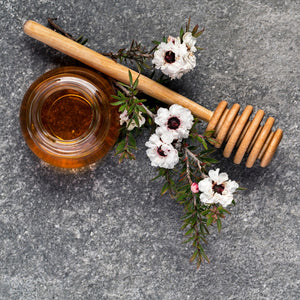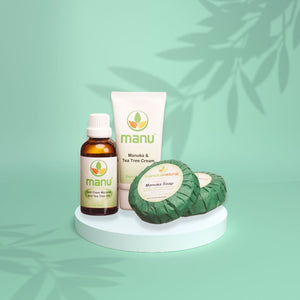Perfumery is a complex art that relies on a delicate balance of natural and synthetic ingredients. Among these, aromatic plants and their essential oils have played a central role in the creation of fragrances for thousands of years. Essential oils are extracted from various parts of plants, including flowers, leaves, bark, roots, and resins, providing the foundational scents that perfumers blend to create everything from fresh, citrusy fragrances to deep, woody or floral compositions. This article explores some of the most important aromatic plants and essential oils utilized in perfumery, each of which has shaped the world of fragrance.
Rose (Rosa damascena and Rosa centifolia)

Essential oil: Rose absolute or rose otto
Aroma profile: Floral, sweet, rich, and slightly spicy
Rose has been called the "queen of flowers" in perfumery, and for good reason. The essential oil extracted from roses, particularly the Damask rose (Rosa damascena) and the cabbage rose (Rosa centifolia), is one of the most prized ingredients in the world of fragrance. Rose essential oil can be distilled as "rose otto" (steam-distilled) or extracted as "rose absolute" (solvent-extracted), both offering rich, heady floral notes.
Rose is widely used in high-end floral perfumes and often serves as the heart note in many compositions. The oil is known for its complexity, offering layers of sweetness, freshness, and depth. Iconic perfumes like Chanel No. 5 and Jean Patou Joy feature rose as a key component, showcasing its versatility and elegance.
Lavender (Lavandula angustifolia)

Essential oil: Lavender oil
Aroma profile: Fresh, herbaceous, floral, and slightly camphoraceous
Lavender is one of the most versatile and widely used essential oils in perfumery, thanks to its soothing and calming aroma. Native to the Mediterranean region, lavender has been used for centuries in both personal fragrances and household products. The essential oil is extracted from the flowers through steam distillation and is known for its fresh, clean, and herbaceous scent, with subtle floral undertones.
Lavender is a common ingredient in fougère and aromatic compositions, where it provides freshness and balance. It is often used in men’s colognes, with famous examples such as Carven Pour Homme and Guerlain Jicky, which highlight lavender’s versatility in masculine scents.
Jasmine (Jasminum grandiflorum and Jasminum sambac)

Essential oil: Jasmine absolute
Aroma profile: Warm, rich, floral, and sweet
Jasmine is another key player in the world of floral perfumery, providing an intense, sweet, and exotic fragrance. The oil, extracted as an absolute from the tiny white flowers of the Jasminum grandiflorum or Jasminum sambac species, is cherished for its sensual, heady aroma. Often referred to as "the king of flowers," jasmine is a staple in high-end perfumes and is frequently blended with other florals or citrus notes to create complex, luxurious fragrances.
Due to the labor-intensive process of harvesting jasmine (as the flowers must be picked at dawn), jasmine oil is one of the more expensive essential oils. It is used in classic perfumes like Dior J'Adore and Jean Patou Joy, where it lends depth and warmth to the fragrance.
Sandalwood (Santalum album)

Essential oil: Sandalwood oil
Aroma profile: Warm, woody, creamy, and slightly sweet
Sandalwood oil, derived from the heartwood of the Santalum album tree, is one of the most valuable essential oils in perfumery. Native to India, this tree has been prized for centuries for its fragrant wood and oil. Sandalwood has a soft, creamy, and subtly sweet aroma that adds warmth and depth to a wide range of fragrances. It is particularly beloved for its long-lasting qualities and ability to act as a fixative, which helps other scents in a perfume blend last longer on the skin.
Sandalwood is used as a base note in many perfumes, providing a rich, grounding effect. It features prominently in both oriental and woody fragrances, such as Guerlain Samsara and Le Labo Santal 33, where it lends a luxurious, earthy depth.
Vetiver (Chrysopogon zizanioides)

Essential oil: Vetiver oil
Aroma profile: Earthy, woody, smoky, and slightly green
Vetiver, often referred to as the “oil of tranquility,” is a key ingredient in many masculine fragrances, though its earthy, grounding scent can be found in unisex and feminine perfumes as well. The essential oil is extracted from the roots of the vetiver grass, primarily cultivated in countries like Haiti, India, and Java. Vetiver's rich, smoky, and woody aroma lends itself beautifully to woody, chypre, and fougère fragrance families.
Vetiver is prized for its ability to add complexity and sophistication to fragrances, acting as a powerful base note. It is a key component in perfumes like Guerlain Vetiver and Tom Ford Grey Vetiver, where it provides an earthy depth and smoky nuance.
Patchouli (Pogostemon cablin)

Essential oil: Patchouli oil
Aroma profile: Earthy, musky, woody, and sweet
Patchouli is one of the most recognizable and distinctive essential oils used in perfumery. Native to Southeast Asia, patchouli oil is extracted from the leaves of the Pogostemon cablin plant and is known for its earthy, musky aroma with sweet, woody undertones. While patchouli is often associated with the counterculture movements of the 1960s, it has a long history of use in perfumery, particularly in oriental and chypre compositions.
Patchouli is frequently used as a base note and can add a grounding, sensual element to perfumes. It is an essential ingredient in iconic fragrances like Chanel Coco Mademoiselle and Thierry Mugler Angel, where its depth and richness create a lasting impression.
Bergamot (Citrus bergamia)

Essential oil: Bergamot oil
Aroma profile: Fresh, citrusy, fruity, and slightly spicy
Bergamot oil, extracted from the peel of the bergamot orange, is one of the most widely used citrus oils in perfumery. Native to the Calabria region of Italy, bergamot is known for its bright, zesty, and slightly spicy aroma, which provides an uplifting top note in many perfumes. Its unique scent profile combines the freshness of citrus with subtle floral and herbal undertones, making it a versatile ingredient in both men’s and women’s fragrances.
Bergamot is a key ingredient in the famous Eau de Cologne formulations and is also widely used in modern perfumes like Acqua di Parma Colonia and Chanel Allure Homme. Its refreshing, lively scent makes it an essential part of the citrus family of perfumes.
Frankincense (Boswellia carterii)

Essential oil: Frankincense oil
Aroma profile: Resinous, spicy, woody, and slightly sweet
Frankincense has been used for thousands of years in religious ceremonies, medicinal practices, and perfumery. The essential oil is derived from the resin of the Boswellia tree, which grows in the Middle East and parts of Africa. Frankincense has a warm, resinous aroma with woody and slightly spicy undertones, making it a popular ingredient in oriental and incense-based perfumes.
Frankincense is often used as a base note to add depth and warmth to a fragrance, particularly in blends that evoke a sense of mystery or sacredness. Perfumes like Amouage Gold and Tom Ford Oud Wood highlight the richness of frankincense, blending it with other resinous and woody notes.
Ylang-Ylang (Cananga odorata)

Essential oil: Ylang-ylang oil
Aroma profile: Exotic, floral, sweet, and slightly fruity
Ylang-ylang oil, extracted from the bright yellow flowers of the Cananga odorata tree, is a key player in many floral perfumes. Native to Southeast Asia, ylang-ylang is known for its intensely sweet and exotic floral scent, which can be both heady and slightly fruity. It is often used in combination with other floral notes, such as jasmine and rose, to create luxurious and sensual fragrances.
Ylang-ylang is a star ingredient in classic perfumes like Chanel No. 5 and Guerlain Mitsouko, where its rich floral scent adds an exotic, feminine touch.
Neroli (Citrus aurantium)

Essential oil: Neroli oil
Aroma profile: Fresh, floral, citrusy, and green
Neroli oil is extracted from the delicate blossoms of the bitter orange tree and is cherished for its fresh, floral, and slightly citrusy aroma. It has a light, uplifting quality that makes it a popular choice for bright, refreshing perfumes. Neroli is often used in colognes, light floral perfumes, and even body care products due to its refreshing, invigorating properties.
Manuka Natural Discount Coupon: Ladislau.10




Leave a comment